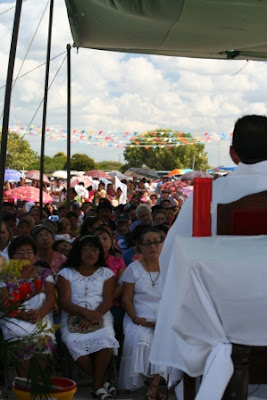Hacienda
Xixim
Hacienda Xixim (she-sheem) is a bamboo plantation with a
past that reaches back into the late 1500s, shortly after the Spanish conquered
the Mayans. At its height, Xixim covered tens of thousands of acres and had
more than 3,000 workers. (Xixim in Maya means “seashell.”)
 |
| Bob Gow |
When Bob Gow, a Houston millionaire and friend and business partner of George H. W.
Bush, first laid eyes on it more than 20 years ago, the once thriving henequen operation
had closed, its buildings had fallen into disrepair and the land had shrunk to
a little over 1,000 acres. He was driving around the countryside outside of the
city of Muna, south of Merida, looking for a hacienda to buy. The insignificant
dirt road he was on passed a trail leading into the low jungle. Curious about
what was at the end of the trail, Bob turned onto it. At the end of the trail
sat the remains of the factory, worker houses and a sizeable main house, all
being swallowed by the surrounding forest.
(Historical note: The fiber of the henequen plant was
manufactured into twine and rope, used in ship riggings, string, sacks, rugs,
and many other things. It became known as sisal rope, named after the seaside
town of Sisal, from where the rope was shipped. In the late 19th
century, the henequen industry grew to unprecedented power in the Yucatan. At
one point, Merida, Yucatan’s capitol, had more millionaires than any other city
in the world. Hundreds of haciendas prospered until the advent of synthetic
products after World War II and the cultivation of henequen in other parts of
the world.)
Bob was told by the on-site caretaker that the hacienda was
owned by three Merida women, all in their 90s. He rushed into the city, not
wanting to waste a second given the owners’ ages and struck a deal.
Since owning the hacienda, Bob has raised bees and promoted
the development of what is now a vibrant Yucatacan honey industry. He also
created a fish farm, introducing tilapia to the local palette. Over 10 years
ago he imported a thick-walled, extremely strong bamboo from India. Today, Xixim creates furniture, fencing,
buildings, palapas, picture frames, and charcoal from its bamboo. Some of it is
shipped to the U.S. to three bicycle manufacturers who build bamboo bicycles.
Over the past 20+ years Bob has refurbished the main house
and its out-buildings. Now he has opened
the hacienda to guests.
Dee and I, along with our neighbors Hank and Sunny, recently
spent a day visiting Bob.
 |
| The bougainvillea-covered factory building. |
 |
The bamboo grows in clumps and is
harvested from the inside out. |
 |
| Harvested bamboo. |
 |
| A primative but effective method for creating charcoal. |
 |
| A guest house and the pool. |
 |
| A guest bedroom in the main house. |
 |
The front porch/veranda with Toby sniffing
near tangerine trees. |
 |
Virtually all of Xixim's furniture was made
out of the hacienda's bamboo.
|












































_(640x582).jpg)